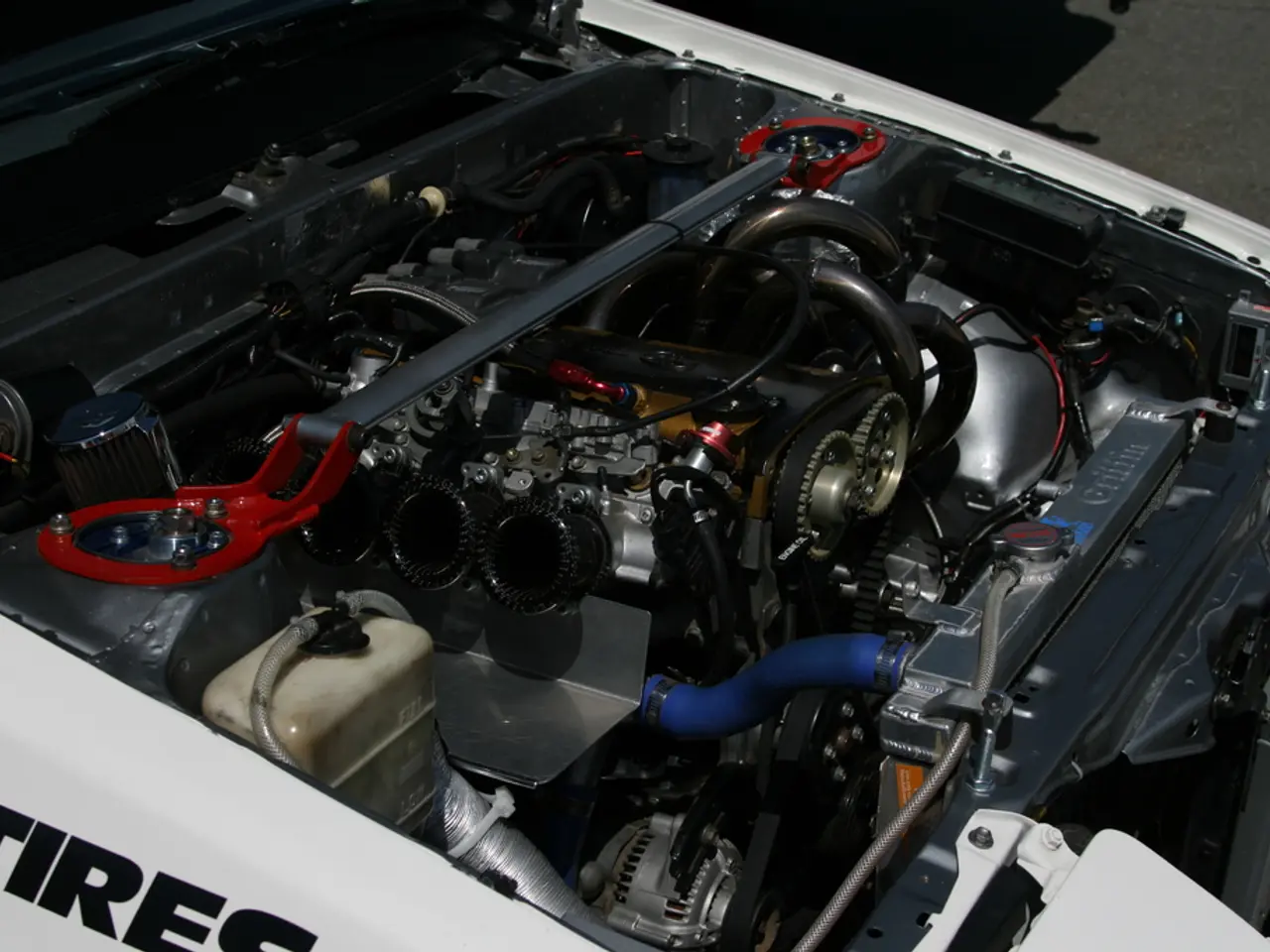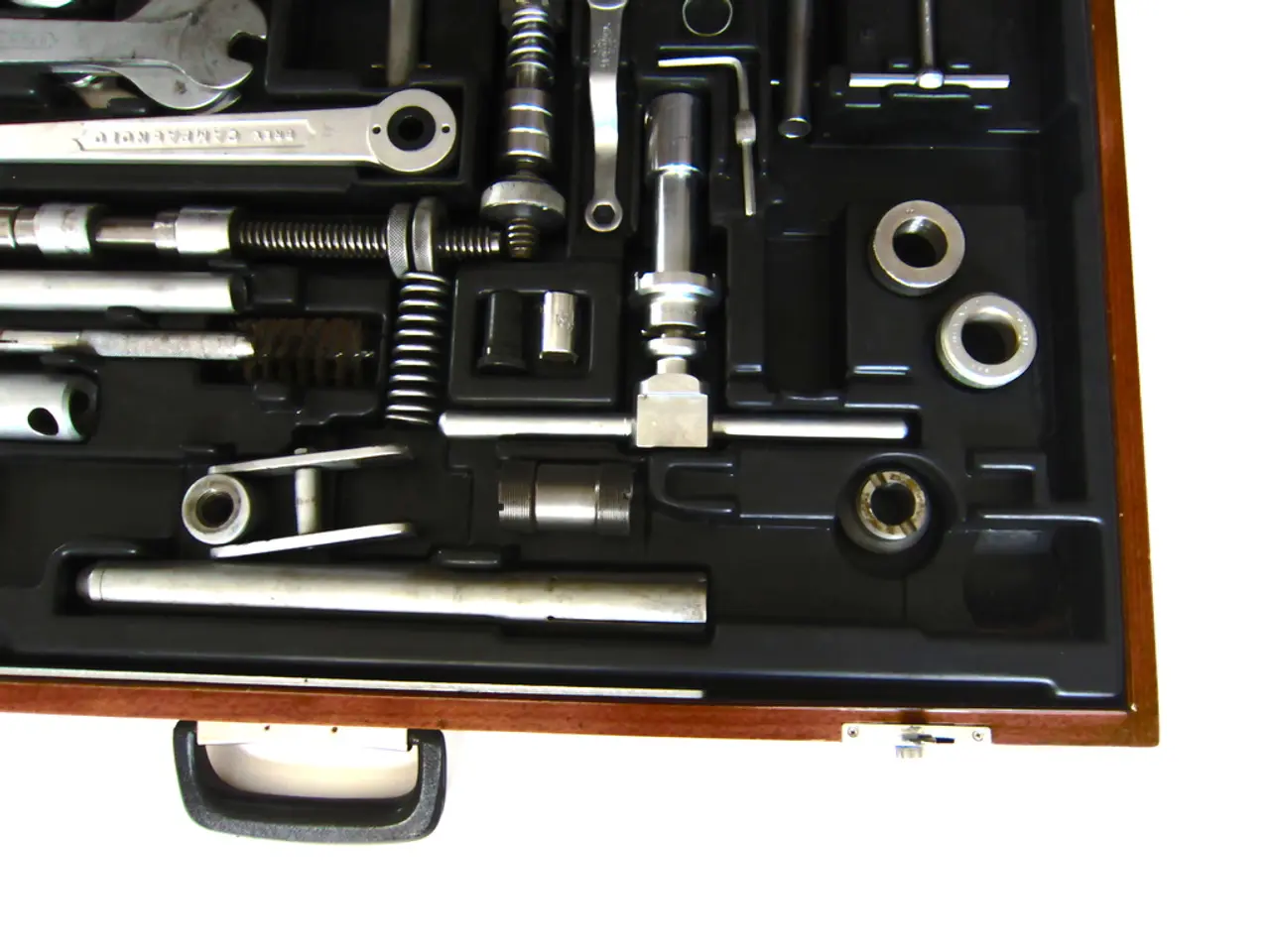Thrust Engine in Space - Comprehensive Description & Clarification - Cosmic Vocabulary Index
Ion thrusters, a type of propulsion system used in spacecraft, are set to revolutionize the way we explore the cosmos. These innovative devices work by accelerating ions to propel spacecraft forward, using electricity to ionize propellant and create a plasma that is expelled at high velocities [1].
One of the key advantages of ion thrusters is their high specific impulse, which allows spacecraft to reach higher speeds and travel greater distances using less propellant. This efficiency is particularly beneficial for long-duration space missions [2]. In fact, NASA has utilized ion propulsion in various missions, such as Deep Space 1, Dawn, and the upcoming Psyche mission [3].
Current advancements in ion thruster technology include the development of the Advanced Electric Propulsion System (AEPS) by L3Harris Technologies. Consisting of three 12-kilowatt Hall thrusters, these thrusters are more than twice as powerful as previous in-space electric thrusters. They are designed to accelerate spacecraft to extremely high speeds over time with only a fraction of the propellant required by conventional chemical rockets [1]. NASA is currently testing AEPS thrusters for use in the lunar-orbiting Gateway station, aiming to efficiently transport cargo and payloads to the Moon, Mars, and beyond [1]. When paired with a nuclear power source, these electric thrusters offer new maneuverability options for deep-space missions [1].
Looking ahead, potential future advancements in ion thruster and broader electric propulsion technology focus on scaling up power levels, enhancing efficiency, and integrating with emerging power sources such as nuclear reactors [4]. The integration in habitats like the Gateway station signals a shift toward using electric propulsion not only for deep-space scientific exploration but also for supporting human space exploration infrastructure.
Other ongoing innovations in space propulsion include continued emphasis on fuel efficiency and longer mission duration for deep space missions, where electric propulsion is pivotal [4]. Developments in hybrid propulsion systems that balance power and control are also being pursued, potentially complementing electric thrusters for certain mission profiles and enhancing sustainability efforts in aerospace propulsion [4]. Advances in 3D printing and modular engine design are also driving innovation, aiming to reduce costs and increase design flexibility, which may accelerate the evolution and deployment of ion thrusters in smaller spacecraft and micro-launch systems [4].
Commercial companies such as SpaceX and Boeing are also incorporating ion thrusters into their spacecraft designs. For instance, SpaceX's Starlink satellites use ion thrusters for orbit maintenance and precise maneuvering [5].
In summary, the current state of ion thruster technology is exemplified by powerful new Hall thrusters like AEPS designed for lunar and deep space missions. Future advancements are expected in power scaling, integration with nuclear power, and complementary hybrid propulsion systems to support more sustainable and efficient exploration endeavors [1][4]. The future of space exploration is indeed bright, with ion thrusters playing a significant role in our journey to the stars.
References:
[1] L3Harris Technologies. (2021). Advanced Electric Propulsion System (AEPS). Retrieved from https://www.l3harris.com/products-and-services/space-and-intelligence/products/advanced-electric-propulsion-system-aeps
[2] NASA. (n.d.). Ion Propulsion. Retrieved from https://www.nasa.gov/mission_pages/station/research/experiments/1180.html
[3] NASA. (n.d.). Deep Space 1. Retrieved from https://nssdc.gsfc.nasa.gov/nmc/spacecraft/display.action?id=1998-050A
[4] NASA. (n.d.). Electric Propulsion. Retrieved from https://www.nasa.gov/topics/technology/tech_articles/ep_overview.html
[5] SpaceX. (n.d.). Starlink. Retrieved from https://www.spacex.com/starlink/
- The developments in ion thruster technology, such as the Advanced Electric Propulsion System (AEPS), are paving the way for science and space-and-astronomy, as they offer higher speeds and longer mission durations for space exploration.
- With ongoing innovations like AEPS, spacecraft propulsion is set to evolve, integrating with nuclear power sources and hybrid propulsion systems, which could revolutionize not only scientific exploration but also human space missions, leading to a bright future for space exploration technology.




